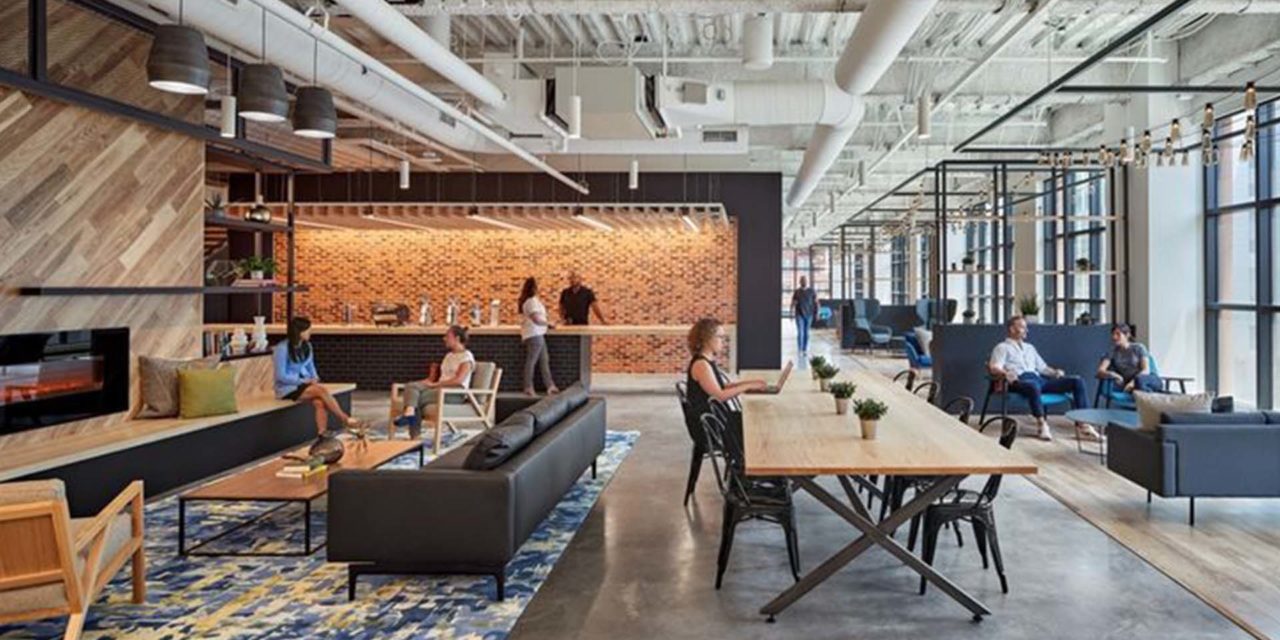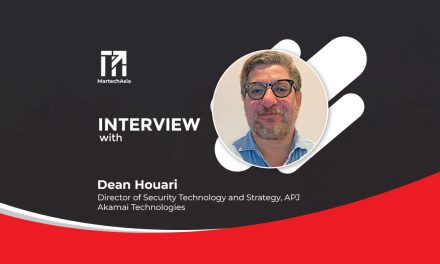MartechAsia spoke to a few industry veterans about the evolution of the hybrid workplace in Southeast Asia and what specific challenges it entails.
Eileen Chua, SAP Singapore Managing Director:
In your view, what are the kinds of jobs that are being hybridised first across SEA?
Now that the promise of large-scale vaccination programmes come to fruition, many companies are grappling with the realities of transitioning their workforce back into the office. Now that more than 60% of millennials and Gen-Zs prefer the option to work remotely more often, it’s clear that pre-pandemic employee experiences will never come back again. But this sentiment doesn’t mean that the traditional office experience is dead – it simply means that employee needs are evolving. Whether your employees are working remotely, on site, or within a combination of both, delivering experiences that keep your people engaged is critically important. Therefore, the hybrid workplace is likely to become more common across many industries for the foreseeable future.
What are the potential benefits that your company has seen due to this?
The main benefit is the opportunity for companies to respond to evolving employee needs and contributing to a better employee experience. Even before the pandemic started, we at SAP have seen the Future of Work to transform due to technology and the rise of a digitally-enabled workplace.
Last year, SAP Southeast Asia provided initiatives to support local businesses in Singapore to address this transformation for work. Through SAP Litmos, its cloud-based eLearning management platform, and SAP SuccessFactors, its cloud human capital management solution, local businesses can tap on remote digital tools to enhance employees’ skillsets, strengthen employee engagement, even as organizations transform and redesign their business models.
What are some specific challenges in doing so?
Beyond traditional HR approaches, there has to be a mindset shift to a more human-centric one, called human experience management (HXM). HXM is about putting people and their experiences at the center of everything, making work not only easier, but more individualized to each employee. With the hybrid work model here to stay, it is increasingly important that employees feel connected, informed and with access to the tools they need to be productive from any device or location. And all of these capabilities are affordably accessible to all types of companies. Digital workplace tools, such as this new HXM solution, allow employees to tap into everything they need – applications, processes, content, and information − from a single touch point and plus, they can personalize the experience based on what matters to each individual, and which insights and actions are relevant based on their behaviors.
Gunasekharan Chellappan, General Manager, Red Hat Singapore
In your view, what are the kinds of jobs that are being hybridised first across SEA?
The trend to hybrid workplace & workforce has been underway for a long time. The primary roles that have been hybridised have been the knowledge worker. With the latest technologies, the physical workspace has long been redundant in the digital world. The physical workplace has become more of a safety blanket for organisations to hold on to for both corporate presence as well as to come with the real world where the transition to digital is still premature. In my organisation, primarily driven by COVID, most of my organisation has moved to a hybrid model. As many clients are also in the same situation, its been a lot easier to move to an hybrid model. Many other roles across various industries are getting automated to support hybrid models.
What are the potential benefits that your company has seen due to this?
The primary benefit has been the overall reduction in operating costs as a result of real-estate space. We have also seen an increase in productivity with the workforce not requiring to travel into the office or to client venues. Generally there has been an improvement in staff morale and welfare as many are more comfortable with the flexibility of working remotely.
What are some specific challenges in doing so?
For a company that prides itself in organisational culture, it has been difficult to onboard people as well as bring people together. It’s more challenging to bring people together as a team when many of them have not met each other or haven’t had the chance to get to know each other socially. While COVID has forced some of this, we have leveraged a hybrid model to encourage teamwork and team building to help people to come together. And this helps with staff retention and generally helps organisations build trust among the teams. The hybrid workplace also helps staff who have challenges digitally or even socially to have the flexibility to choose how they would like to work without having to impose specific rules.
Neha Pareek, Director, Human Resources, IBM ASEAN
In your view, what are the kinds of jobs that are being hybridised first across SEA?
For IBM, we believe that the future of work at IBM isn’t in the office or remote, but a combination of both. Last year has proven to us we can be productive, even when we are at home, and remote. As our CEO Arvind Krishna shared, IBM expects 80% of IBMers to choose a hybrid model, meaning they’ll come into the office two or three days a week and work remotely the rest. And we expect the remaining 10% to 20% of IBM’s workforce to go fully remote and never return to the office. Return to work at IBM will play out differently in different parts of the world, depending on how successful various geographies are in combating the pandemic. As we have seen, the rate of the pandemic, when you look at certain countries in Southeast Asia or other parts of the world, shows that this thing has it’s ebbs and flows so you have to be flexible to adapt at speed. Roles will increasingly require an outcome based approach vis-à-vis prescribed formats of where work gets done. At IBM, we are embracing the hybrid model for most roles and are continuing to iterate as we go along.
What are the potential benefits that your company has seen due to this?
During a global online brainstorm for all IBMers last year, 60% told us they prefer to be in the office at least one to three days per week and 72% said they see the office as a place to go for specific team activities. The vast majority miss social interaction, spontaneous collaboration, and the learning and networking opportunities that come from being in the office. We have seen many potential benefits due to this. Here are the key steps that we’re taking to create a sustainable foundation for hybrid work at IBM:
New design principles for how work gets done:
Like all good change management, this starts with clear and consistent communication. Leaders need to set new expectations that liberate all employees from the usual 9-to-5 workday. They need to lay out new design principles that paint a picture for how individuals and teams can take control over how work is done. These principles should be deliberately high-level, avoiding the temptation to dictate the specifics of what the workweek looks like. Above all, leaders need to focus on the outcomes they expect to see, and then empower teams to determine the best path for achieving their objectives. If you think about this model, the role of leadership is to enable and empower instead of command and control.
Flexible hours to support employees to thrive personally and professionally:
Leading with empathy is key during this time. At IBM, our “Work From Home Pledge” has become a powerful tool for keeping this bottom-up approach front of mind every day. Elements such as being “family sensitive,” supporting “flexibility for personal needs,” and “setting boundaries” give every member of the team the license to put their personal life first. It also sets a new tone for what can be expected of colleagues, supporting each other to excel at work and at home. At IBM, flexibility has long been core to our work environment, and teams have long been entrusted to determine what works best for them. This helped IBMers to adapt and support each other throughout the pandemic. For example, prior to COVID-19, some development teams would work five days a week in the office during critical design sessions and then work remotely for several weeks at a time. Some teams started at 7 a.m. and ended at 3 p.m. In our hybrid workplace, we anticipate our teams will advance this flexible approach even further.
Rebuilding the infrastructure of collaboration:
The infrastructure you used in the office-centric era does not support a remote-first model. And it’s equally true that the virtual infrastructure you relied on for the past year won’t support a hybrid model. Both your physical and digital tools need an overhaul. Instead of rows of desks that provide everyone with a workstation, you might only need space to accommodate the quarter of employees who will be in the office on any given day. This may mean dramatically downsizing the physical footprint of your office, or it could mean reimagining the office as a space primarily designed to facilitate social connection and team building. It also means that you need to empower your people to design their physical workspaces for their needs that day or that week. Furniture should be moved easily, walls should be easy to reconfigure, and more. As managers design how work gets done, they should also be able to customize the spaces where their teams work—to fit the needs of the team that day.
What are some specific challenges in doing so?
We believe that getting hybrid work right depends on embracing this uncertainty and iterating as we go. It depends on resisting the urge to impose new top-down policies and structures. Instead, individuals and small teams should be empowered to experiment with how work gets done best for them, and how best to achieve their desired outcomes. This decentralized approach carries risks but at its best, it’s well worth the inevitable short-term growing pains. It promises to unleash opportunities for greater diversity in the workforce, more empowered employees, and organizations that can operate with newfound agility and decisiveness. And, the hybrid model is an opportunity to abandon habits that no longer serve people and companies well. In terms of career growth, we do have concerns such as “about what’s their career trajectory going to be.” If they want to become a people manager, if they want to get increasing responsibilities or if they want to build a culture within their teams, how are we going to do that remotely?”
At IBM, we want to offer our employees flexibility when it comes to where they work, but we estimate 30% to 40% of our employees will ultimately want to return to the office five days a week including, “people in inner cities, people with maybe an environment at home that is not so conducive to work and others who just love the [in office] environment. There is no substitute for the in-office experience “that allows creativity, culture building, learning from other people, the serendipitous ‘hallway conversations’ all to happen.”
Getting hybrid work right is going to be hard for every organization. Incremental change, tweaking around the edges, or making ad hoc accommodations will never be enough. Companies who take this work seriously will undertake a wholesale rethinking of the experience they offer their employees. They will embrace the uncertainty that comes from moving away from a defined schedule. They will take an outcome-focused, human-centric culture that gives individuals and teams the autonomy to design what works best for them to achieve their ambitions. And they will rethink the tools and processes that have, for too long, been taken for granted, pioneering new approaches for an entirely new way of working.
Above all of this, the biggest opportunities as organizations redesign hybrid workplaces are – How do you build a collaborative and inclusive culture together and uphold values the organization stands for? How do you continue to promote diversity and inclusion for all virtually? It will take early iterations and tolerance for failures along the way. We recognize that thriving in the new era of work means constantly evolving how we work while focusing on our core values and building our culture together.

















